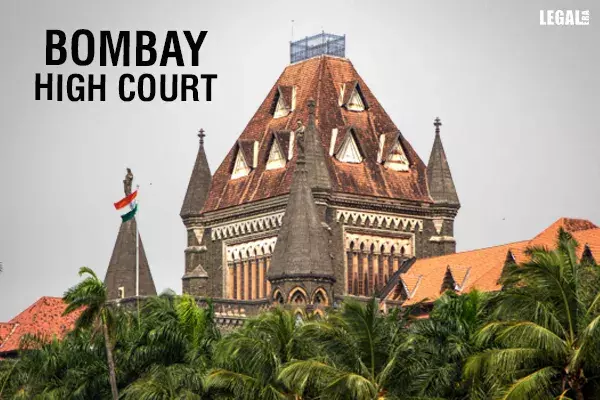Bombay High Court: CERSAI Registered Secured Creditor Takes Precedence Over VAT Authorities In Enforcement Proceeds
The Bombay High Court has clarified that in the event of a sale of a mortgaged asset, where the mortgage in favour of a;

Bombay High Court: CERSAI Registered Secured Creditor Takes Precedence Over VAT Authorities In Enforcement Proceeds
The Bombay High Court has clarified that in the event of a sale of a mortgaged asset, where the mortgage in favour of a secured creditor is registered earlier with CERSAI (Central Registry of Securitization Asset Reconstruction and Security Interest of India) and the MVAT (Maharashtra Value Added Tax Act, 2002) Authorities also hold a charge, the proceeds from enforcing the mortgage would prioritize the discharge of dues owed to the secured creditor.
The Court added that only the remaining amount, if any, after settling the obligations of the mortgagee would be allocated to the MVAT authorities.
Therefore, the High Court concluded that upon a secured creditor registering its security interest under Section 26-B of the SARFAESI Act (Securitization and Reconstruction of Financial Assets and Enforcement of Security Interest Act, 2002), regardless of any other prevailing law, the debts owed to the secured creditor would be given precedence over all other debts, including taxes owed to the State Government.
Justices B.P. Colabawalla and Somasekhar Sundaresan noted that the interaction between Section 26-E of the SARFAESI Act and Section 37 of the MVAT Act merely means that the MVAT authorities would lack priority in accessing assets secured in favor of the secured creditor and registered as a priority with CERSAI.
In the present case, the borrower had availed credit facilities from a consortium of banks led by the petitioner, resulting in the execution of various loan and security documents over time. The security interests of these secured creditors included a mortgage over specific properties, namely land measuring 1035 square meters along with a factory situated at Plot No. N-3, Additional Ambernath Industrial Area, and another property at Plot No. A-564, TTC Industrial Area, MIDC, Mahape, Navi Mumbai. These assets collectively constitute the secured assets.
The mortgage over these properties was duly registered under Section 26-B of the SARFAESI Act with CERSAI, along with a Charge Registration Certificate. Subsequently, in 2018, the borrower's account was categorized as a non-performing asset due to defaults in payments to the consortium.
In 2019, in response to the non-payment, the petitioner issued a demand notice under Section 13(2) of the SARFAESI Act, claiming total indebtedness of Rs. 35.31 crores, and then also took symbolic possession of the secured assets. The petitioner proceeded to file an application under Section 14 of the SARFAESI Act before the District Magistrate. Subsequently, the District Magistrate issued an order directing the Tahsildar to take physical possession of the secured assets. Following this directive, the petitioner successfully took physical possession of the assets. Subsequent attempts were made by the petitioner to sell the secured assets through e-auction.
The MVAT authorities initiated steps to collect tax arrears allegedly owed by the borrower, initially from the borrower directly and subsequently from the petitioner. In their pursuit of recovery from the petitioner, the MVAT authorities asserted their claim of having a statutory first charge over the secured assets. They contended that any secured creditor's claim over mortgaged assets should yield to this statutory first charge. During this process, the MVAT authorities urged the petitioner not to proceed with the auction of the secured assets. They emphasized that any proceeds from the sale should first be allocated towards settling the outstanding sales tax dues in full. Additionally, a demand notice was issued under Section 32 of the MVAT Act, demanding that the petitioner settle Rs. 16.60 crore in sales tax dues within 30 days. Failure to comply would result in the recovery of the amount as arrears of land revenue from the petitioner.
The Bench cited Section 26-E of the SARFAESI Act, noting that secured creditors and tax recovery officials have the option to register their security interest and attachment orders, respectively, with CERSAI.
The bench elucidated that this registration serves as constructive public notice of the charge on the property concerned. Additionally, it emphasized that a registrant with prior registration holds precedence over subsequent registrants. Furthermore, it underscored that without such registration, the secured creditor would not be entitled to undertake enforcement actions under the SARFAESI Act.
The Bench further noted that almost five years prior to the MVAT authorities issuing the initial adjudication order demanding tax and nearly seven years before the first attachment order was issued, the mortgage in favor of the consortium of banks led by the petitioner had been established and registered with CERSAI.
“Such prior registration accorded the petitioner-led consortium the entitlement to priority under Section 26-C(2) of the SARFAESI Act, read with Section 26-E, no sooner than these provisions were brought into force on 24th January, 2020”, added the bench.
The Bench also clarified that although Section 37(1) of the MVAT Act supersedes any contractual provision establishing a charge, it remains subordinate to any provision within a Central Act that grants priority to another entity.
The Bench further added that Section 26-E of the SARFAESI Act, being a provision within a Central Act, distinctly grants primary precedence to secured creditors, contingent upon the registration of such charge with CERSAI.
Therefore, the High Court concluded that the attachment orders issued by the MVAT authorities would not grant any precedence over the registered security interest held by the consortium of banks led by the petitioner over the secured assets. The petitioner retains the foremost priority concerning enforcement actions against the secured assets, owing to Section 26-E and its prior registration of the security interest with CERSAI.
The Division Bench, ruling in favor of the petitioner, affirmed that the petitioner is entitled to enforce its security interest, which holds precedence over the claims of the MVAT authorities.

